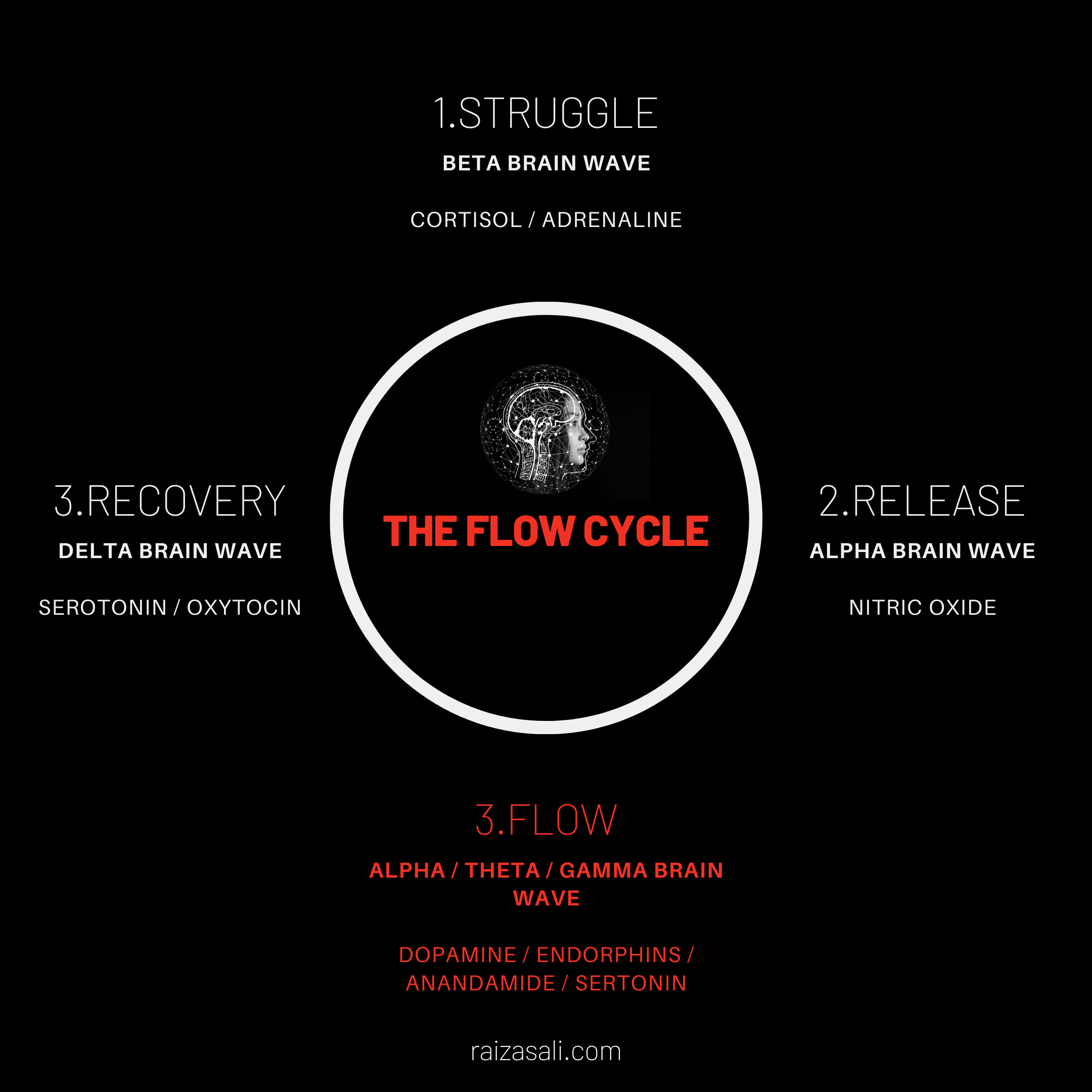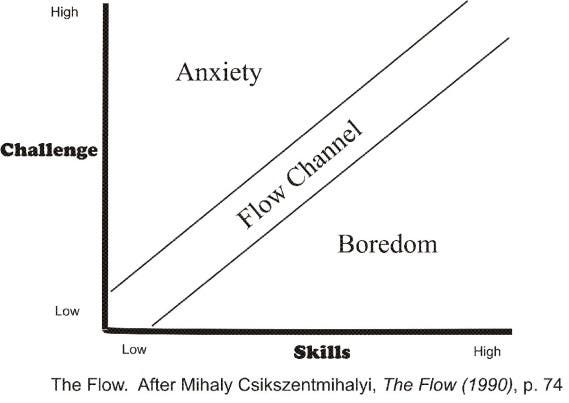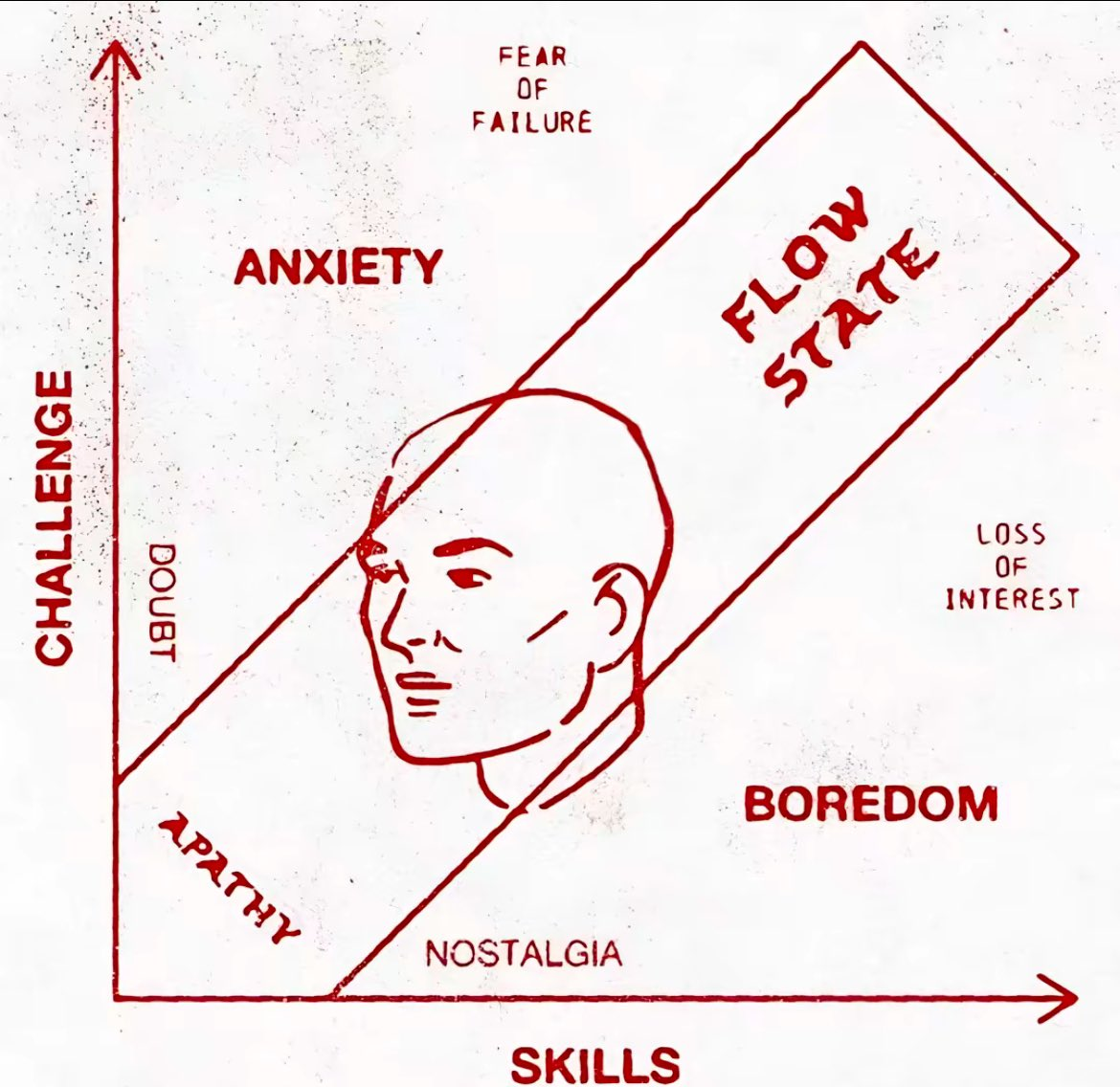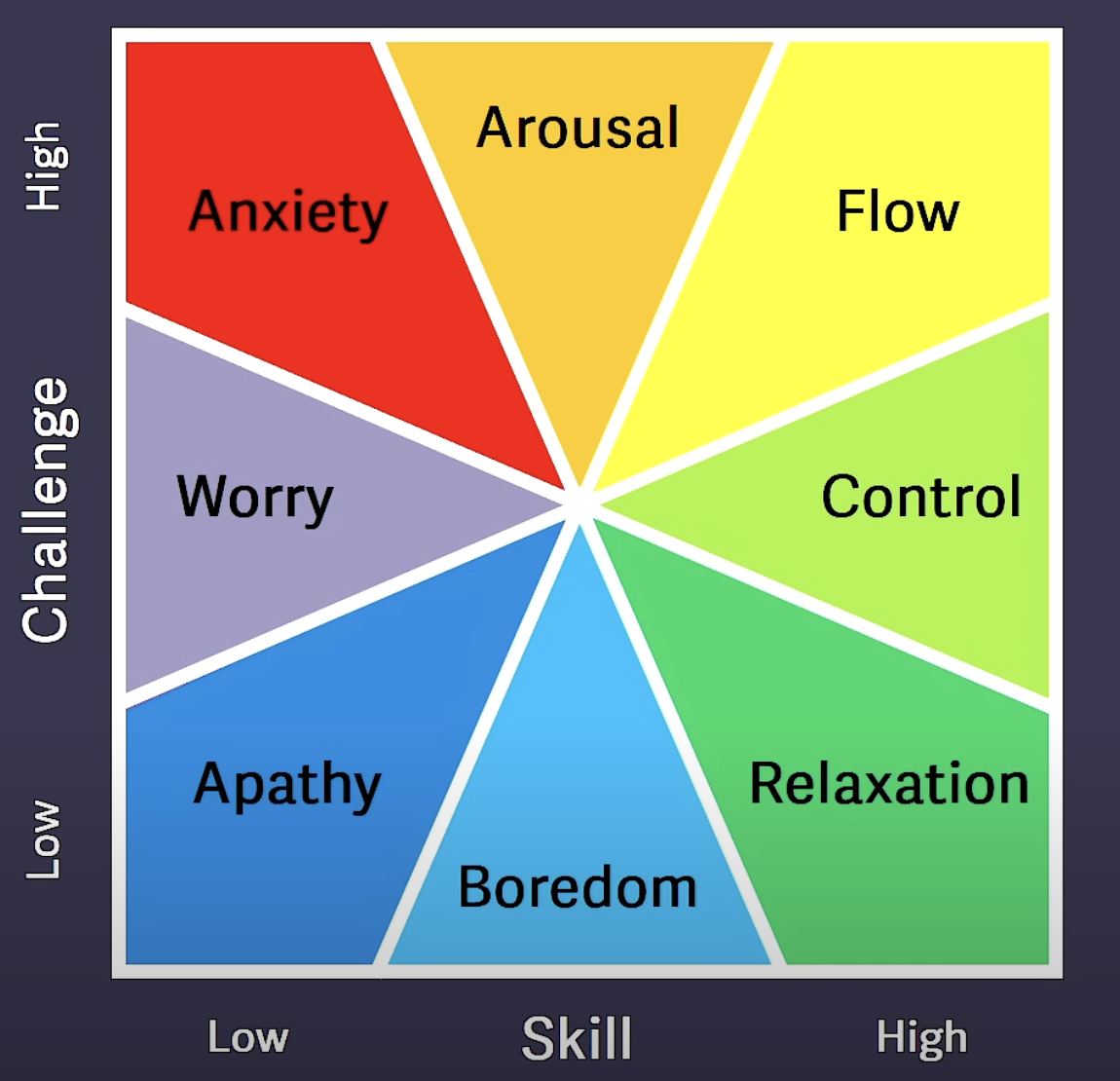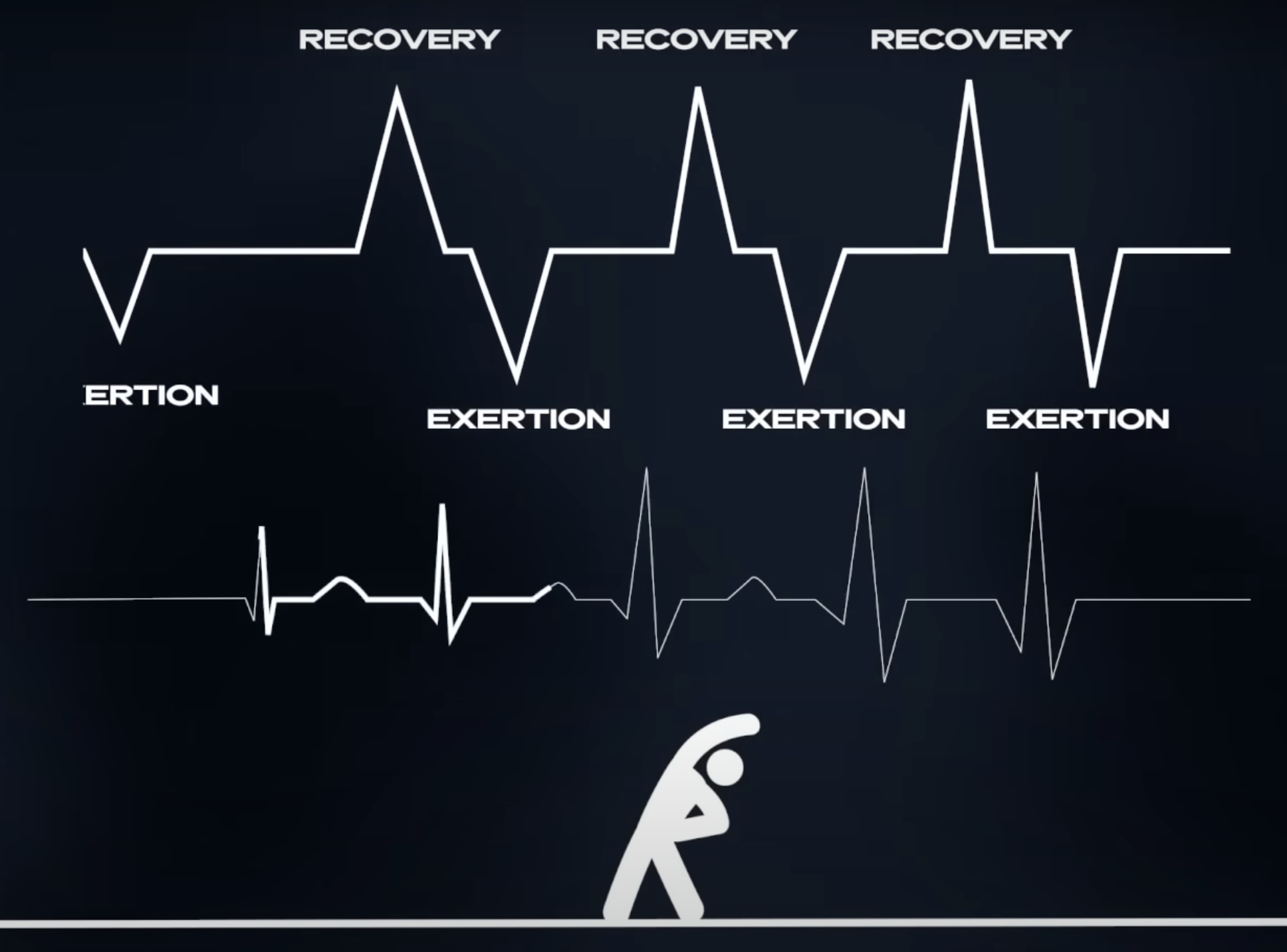Flow State and Triggers
course:: Primal Learning Udemy Course (mschofield89 acocunt)
What is Flow?
- Intense and focused concentration on the present.
- Merging of action and awareness.
- Loss of reflective self-consciousness.
- Sense of personal control.
- Distortion of temporal experience.
- Activity becomes intrinsically motivating.
Conditions for flow
- Knowing what to do next - directional clarity while overcoming uncertainty.
- Knowing how to do it - competence and self-belief.
- Freedom from distractions
- Clear and immediate feedback - mentor yourself, coaching, speak to customers
- Navigate flow channel from low -> highly perceived challenges & skills - challenge-to-skill balance
Phases of Flow: 🌊
1️⃣ The Struggle Phase: 🤕
➡️ The Engage Phase 🏋️♂️
2️⃣ The Release Phase: 👐
3️⃣ Flow: 🌊
4️⃣ The Recovery Phase: 🧘♂️
Brain Chemistry: 🧪
Our brains are the same as cavemen.
Your survival chemicals and instincts are at play 24/7.
You need to be aware of the mismatch between your physiology and the modern world's high-paced temptations.
Your brain is neuroplastic.
Your brain can build itself with practice and etching neural pathways.
- you need to refresh your learning!
1️⃣ 🧪 Dopamine:
- The reward chemical. "Do it again!"
- Think: cocaine for the brain.
Dopamine release when working or learning will build habits and consistency.
Dopamine gives drive and excitement.
High Dopamine levels feels like a 'motivation' state.
Break goals into the smallest possible tasks to trigger dopamine.
Prepare and give yourself little treats when you succeed.
(effort, not outcome!)
[[Tiny Habit Celebrations.png]] will help amplify dopamine after completing a task/win.
2️⃣ 🧪 Noradrenaline:
3️⃣ 🧪 Serotonin:
4️⃣🧪 Endorphines:
5️⃣🧪 Nitric Oxide:
6️⃣🧪 BDNF (Brain Derived Neurotropic Factor)
7️⃣🧪 Cortisol:
8️⃣🧪 Oxytocin:
Tactics
🎓 Learning and Practice:
Learning how to learn MOC
things I want to learn - list
Your brain operates best when practice is spaced out.
eg. learning the guitar is best when done in 1hr increments with rest and consolidation phases in between (see: 'phases of flow' below)
🍅 Pomodoro Technique is excellent for this! 🍅
💆♂️ Priming:
Priming
You can select what you're consciously thinking about and how you're framing problems by 'priming' for situations.
eg.
If you're told to think of 'food', then to solve this word problem:
"SO _ P"
You'll probably think of the word: "SOUP"
But, if you're told to think of 'cleaning':
You'll probably think of the word: "SOAP"
💕 Heart Resonance and State:
You can prime for learning and action by making sure you're physiologically in the best state possible.
Training HRV and somatic (intuitive) heart resonance will give you the best opportunity for learning and getting through struggles.
- Growth vs fixed mindset
- Giving rewards for effort and commitment to the process is much healthier than rewarding 'skill' or outcomes!
- Be outcome independent
🐶 Conditioning and Triggers:
Think: Pavlov's dog
- you are the average of the five people you associate with most - choose who you spend time with.
- if your friends are negative, you'll be negative. And vice versa.
- Aim to be the least skilled in a group, learn and give value.
📝 Memory:
- Memory is best stored when it's in spacial and temporal awareness (eg. Palace technique)
- Repetition alone is not going to be effective.
- Working memory is your RAM and can be easily overloaded.
- 'Being present' is the best way to access your working memory
- Distractions destroy your working memory. We spend 11 mins of focus for every 25 mins of work.
- Write everything down to avoid distractions (have a logbook)
💢 Emotional Memory:
eg. if having a near drowning experience (Tim Ferriss) you won't want to ever learn to swim.
Vice Versa:
- if memory is attached to strong arousal emotions, we attach more meaning to it.
- Try to add emotion to any learning to make it more relevant and a more automated action.
〜 Brain Waves:
- Alpha, Beta, Delta and Theta states
- Consume L-Theanine to improve
- Practice HRV resonance
🕔 Section 3: Flow Triggers:
[[Flow-Trigger-Cheat-Sheet.pdf]]
Flow State and Triggers Resources
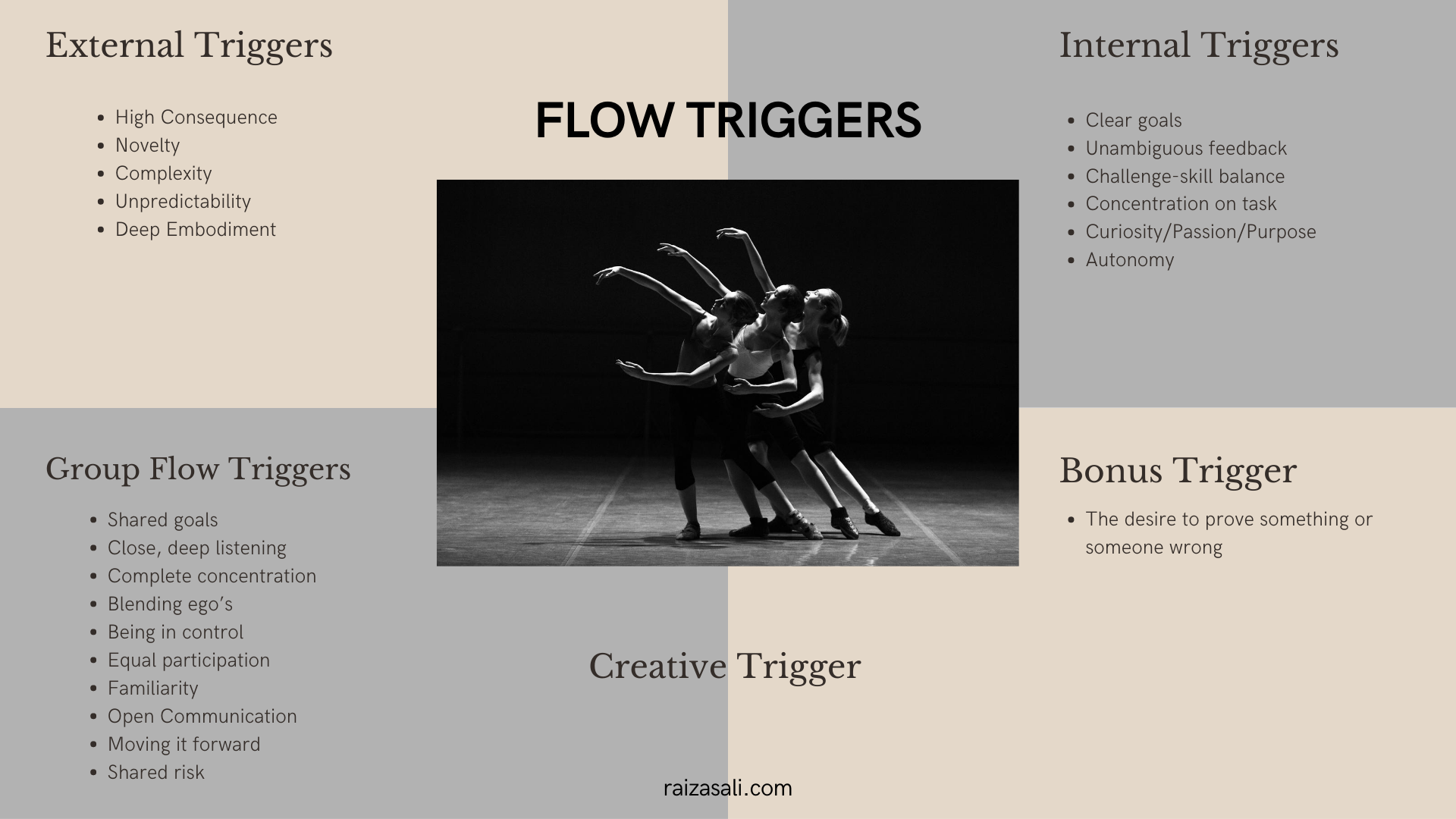
22 Flow Triggers: The Ultimate Peak Performance Toolkit For Hacking Flow
🧠 Trigger 1: Intensely Focused Action
action is a skill => action begets action => inaction is a slow death
- single tasking Single focus.
- 11-to-25 rule - every dopamine distraction, costs 25 mins of life
- Parkinson's law (restrict the window for success) - enforce deadlines
🧠 Trigger 2: Clear Goals
get clarity
We release dopamine when:
- we 'set' goals, and when:
- we accomplish them!
You get high setting yourself personal targets, but you lose that feeling when you don't accomplish them.
Make goals centred around mastery and long-term growth.
Attach emotion to the goal, add stakes and make it painful to fail.
Small Chunk:
- break down into 1 - 3 tasks for the day (don't push more)
- add emotional triggers for state to these tasks
🧠 Triggers Pt 3: Immediate Feedback
Identify methods of immediate feedback;
eg.
- replicate what you've learnt fast, test yourself
- build something (a product) with the knowlage you've gained
This is easy with coding because you'll get an error message.
With language learning, speaking what you've learnt is quick feedback.
With slower projects, find ways to feedback to yourself so you don't allow doubt or distraction to set in,
Find mentorship in anything you do seriously.
You want to reduce the time between action and feedback.
==Feedback loops should be your mission! ==
learning in public
🧠 Triggers Pt 4: Challenge-to-Skill ratio
challenge-to-skill balance
You want to frame what you're working on in terms of the skills you currently have.
"easy to do, easy not to do"
Break things into chunks that will be <5% higher challenge than your skill level.
🧠 Triggers Pt 5: High Consequences:
High risk = high reward
High risk releases adrenaline, dopamine and cortisol.
Take responsibility for things. (at work, in life)
Make a public statement and add stakes (think: Stikk)
🧠 Triggers Pt 6: Rich Environment:
Sensory overload leads to state.
eg.
White water rafting
The subconscious kicks in
But, this can be detrimental for a sole focus, academic learning.
🧠 Triggers Pt 7: Deep Embodiment
Awareness of your environment and the state around you.
Explore the site around you.
🧠 Trigger Pt 8: Serious Concentration
Full attention
Total presence in any situation.
When in a situation - be present. Give anything your all.
🧠 Trigger Pt 9: Shared and Clear Goals
Think: values and principles
A clear vision for the company.
🧠 Trigger Pt 10: Communication
You need clear flow of communication.
Positive and constructive feedback loops
Trust and time.
🧠 Trigger Pt 11: Familiarity
Flow State and Triggers Resources
🧠 Trigger Pt 16: "Yes, and..."
Build on ideas or suggestions with "yes, and.."
Make jokes and light situations this way.
🧠 Trigger Pt 18: Music
Tag music onto your process eg. brain.fm
Rotate playlists and variety
No lyrics or distractions
🧠 Optimise your Flow Triggers:
- The more you enter flow, the easier the struggle will become
- Forgive yourself when you fail to surpass the struggle phase
- Reward yourself for overcoming the 'struggle' (chocolate, small treats)
Additional Notes:
🌚 Distraction:
Surf the urge
distraction
The opposite of "dis-traction", is not 'focus' but; 'traction' (to move)
The two things that move us/ give us traction are; 'internal triggers' and 'external triggers'
Emotions/ resistance/ 'struggle phase' come like waves.
When you feel them:
- Surf the wave! 10 min sit down and HRV
- Give yourself love, be curious about the sensations
- Feel gratitude to be alive
Say: "I can have that distraction, but in 10 mins"
😫 Avoid distractions at all costs!
⏱ Time = 💵 Money = 🧬 Life
🛠 Key Tools:
- Time tracking tools
- Supplements
- (caffeine, L-theanine, L-tryptamine, Turmeric, L-tyrosine, L-citruline. L-Arginine, Grape seed extract, Resveratrol, Q10, melatonin, L-ornithine, magnesium)
- Supplements MOC 💊
- Supplements I'm currently taking
- 🏋️♂️ Embrace the Struggle phase (Get fucking mad with resistance!)
- 🔥 Take risks (Use fear to steer you - face it!)
- 🧘♂️ Single task like a motherfucker (Fuck distractions!)
- 🧪 Reward small goal wins to stimulate Dopamine (Huge Action!)
- 💕 Practice HRV resonance for state. (State first!)
- ⏳ Consistency beats intensity. (train, rest, train again)
- 💐 Bunch Habits to leverage existing routines (Compound habits!)
Focus on <3 Flow Triggers at a time 🧠 - build these muscles!
🏕 The Flow Cycle in Daily Life:
- Embrace the struggle phase, learn to accept and welcome it!
This is where all goals go to die.
Make struggle tasks small, easy to execute and within your skill level.
📝 Plan and prepare: (mise-en-place)
- Use HRV for resonance and steady state.
- Use 80:20 rule
- Use Parkinson's law
- Use an Eisenhauer matrix
- Use fear setting
How to Practice:
- Practice retrieving information you've learned (think: recall and prompt cards) Blurting Method
- Space your practice throughout the day/week (rest and recovery time between sessions accelerate the learning process)
- Test yourself frequently during practice (make up tests or questions to ask yourself later)
- Vary your practice, but keep consistent. (Long-term, it's better than getting really good at just one thing)
- Ask 'why?' more than 'what'
Most of our intuition about studying and learning is wrong. There's lots of habits that are counter-intuitive. But work. Trust the process.
🏋️♂️ Flow in working out / exercise: 🏋️♂️
Reminder:
Flow is where the level of challenge, meets the level of skill.
- You want exercise to be pleasurable, in flow.
- You want your skill level to meet the challenge level.
You don't want to be in a state of anxiety!
(that's why you fail to go training, you don't want to do it again)
eg
If I can do 10 pull-ups max reps. - should you?
Take 2 people, person (a) and person (b):
Both can do 10 pullups max.
(a) does 10 reps in one day, kills himself and is sore for the next 3 days.
(b) does 5 reps, feels good.
(a) has to rest, doesn't get up early the next 2 days and feels anxiety and pain when thinking about training.
(b) is in the gym the next day. Does 5 more reps.
3 days later, (a) has only done 10 reps. In 1 day.
(b) has done 20 reps.
Who's training better??
Over the long term:
⏳⏳ Consistency BEATS intensity! 🥵
Watch: Pavel Tsatsouline workout - Joe Rogan:
"If you go HARD everyday, you're not really going HARD"
🛠 Optimising Learning Strategies: 🛠
My strategies MOC
Decision making tools
- what's core to success?
- 20% effort gives 80% outcomes
Parkinson's Law:
- a task will swell to the time allotted to it.
- Occum's Razor: "the simplest solution is most likely the right one"
- "Entities should not be multiplied without necessity"
Bloom's Learning Domains:
- Remembering, Understanding, Applying, Analysing, Evaluating, Creating
Any level of thinking requires all levels below it.
🏋️♂️Impliment your learning! 🏋️♂️
- just-in-time learning
- Applied learning
- Identity adjustment
- learn in public
